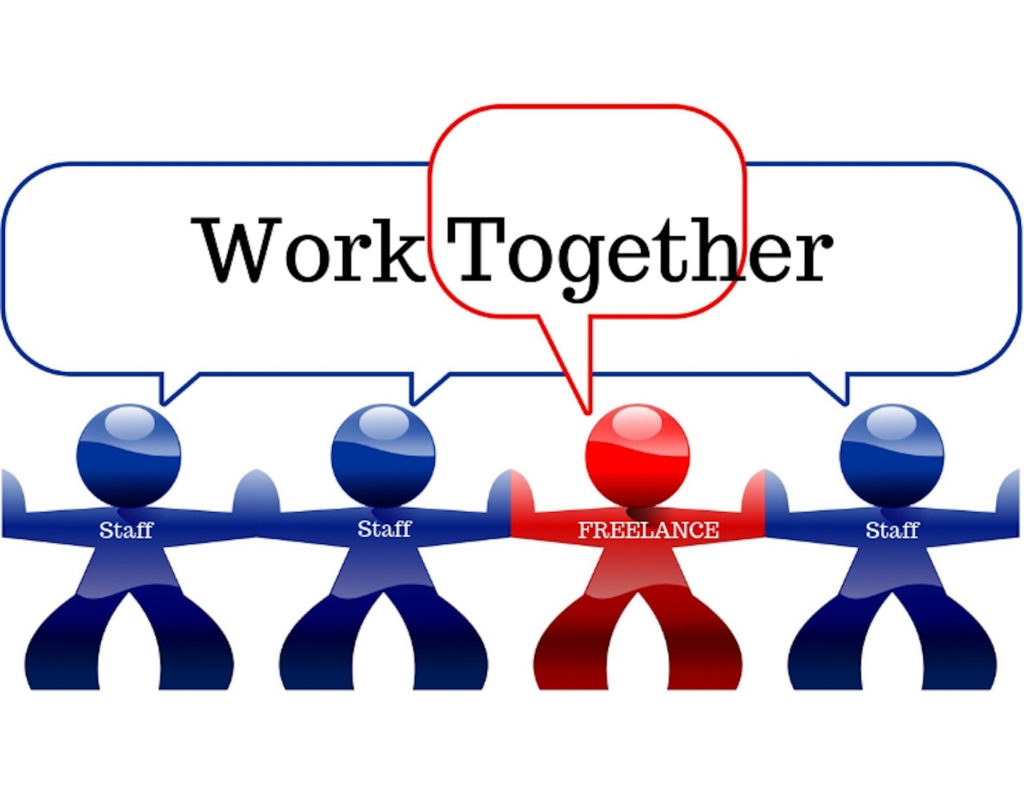Benefits of Hiring a Freelancer
Companies of all sizes and in all industries do their best to meet, if not exceed, their customers’ expectations without exceeding their internal resources. In other words, companies today must produce the same or better results as years past, and in many cases without a robust staff.
Although it’s admirable to continuously “do more with less,” the relentless pace often leads to staff burnout. Redistributing work is one solution; another is to hire an independent contractor, or freelancer, to assist with some projects.
The optimal freelancer is responsive, flexible with both deadlines and multiple revisions, and a good listener. Whether you need an extra set of hands for a one-time project or are considering an ongoing working relationship, hiring a freelancer could prove to be one of the best investments you can make. They can easily become an invaluable member of your team. With some outside help, you can increase your output and decrease both your workload and stress level.
Below we outline the major advantages of hiring a freelancer.
1. Low or No Overhead
One of the most attractive benefits of hiring a freelancer is the lack of overhead costs on the part of the business owner. An independent contractor doesn’t require the company-provided benefits of a full-time employee (so no insurance package or vacation/sick time necessary), and payroll expenses are minimal (typically a per-project fee).
2. Focus on Your Strengths
If you’re part of a small team, you’re probably used to tackling projects that are out of your immediate skill set or comfort zone. You may not be a professional web designer, but you’ve learned enough to at least keep the site updated as your manager requests. But hiring a freelancer to redesign and manage the website will allow you to get back to the duties you would rather focus on and are frankly more to your liking.
3. Maximize the Contractors’ Strengths
Bringing a freelancer on board means you can, and should, expect high-quality work because frankly, it’s what they do. Your marketing team could most likely produce an adequate brochure or annual report; a professional graphic designer can give the piece the polish and “wow” factor you were seeking but couldn’t quite accomplish in-house. Offer suggestions and work with the freelancer every step of the way, but ultimately, give them the freedom to do their job and create a final product you are truly proud to show off.
4. Work on Your Project “Wish List”
It seems as if every year, you add projects like “create new product catalog”, “streamline new hire onboarding with human resources”, “find new web designer” to your long-term wish list, and every year these projects get pushed further and further down your To Do list as your immediate workload, completed using existing policies and processes, takes priority. Hire your freelancer when you’re ready to commit time and resources to develop the project further than the Idea stage and let them share the responsibility of finally getting it finished and rolled out.
5. Dedicated Support
You and your team are working diligently on a long list of tasks and projects, so it’s difficult to dedicate one person to your new brochure or website redesign. The freelancer you hire will give their full attention to the project for which they are hired. They typically ask a list of questions up front to get a better sense for the scope of the project so they have the information they need to get started. Besides a few questions along the way and occasional check-ins via phone, email, or screen time, trust that you can hand over the entire project to the capable hands of your freelancer.
6. Frees Up Staff
You know you should revamp your marketing materials. Your website could use some work. Your payroll department is swamped since your last major hiring event and 25 new people have been added to your staff. But how are these projects supposed to get done beyond your regular workload?
An independent web designer can tackle the redesign. A graphic designer and/or content creation duo can work on your marketing materials. And an independent accountant or payroll professional can help with your bookkeeping or enrolling your new hires. Your contracted professional can work on a full- or part-time basis until you no longer need their services.
7. Available for Long- or Short-Term Projects
There’s no reason to terminate your working relationship with the freelancer you’ve hired if you’re pleased with their work. Freelancers are quite used to handling one-off projects; in some cases, however, companies have a steady flow of projects and might consider a long-term agreement.
The most ideal scenario would be to hire the freelancer on retainer, in which they are paid an agreed-upon amount each month. In other instances, the freelancer would sign a contract to complete a certain number of projects in a set time.
8. Work with Contractors in Various Disciplines
Freelancers work in virtually every industry, so there are plenty of opportunities to recruit and hire these professionals. Web and/or graphic design, social media or digital strategists, photography, content creation, HR /payroll/benefits consulting…whatever your company needs, you can find freelance talent to do it.
9. No On-Site Workspace Needed
Just as you wouldn’t need to provide benefits for your contracted freelancer, they also wouldn’t need a dedicated workspace at your office, as most freelancers work remotely (the perfect arrangement if space in your office is already limited!) You may meet with them or ask them to do some of their work on-site, but they work from home in most instances. Although they are not a regular presence in your office, they are available by phone, email, FaceTime or Skype, or other means. This arrangement works well in most cases—the business owner or manager has a professional dedicated to their project; the freelancer is exempt from the office politics that exist in every workplace and they can focus solely on their work.
10. Cost-effective
Whether you are a small business owner, middle manager, or corporate executive overseeing several departments, budgeting and examining your bottom line is a major driver. Besides the cost savings when it comes to benefits, business owners and managers appreciate the fact that they do not pay freelancers a regular salary (unless they are working on retainer).
At times a manager may weigh the options of contracting with a freelancer or hiring a full-time staff member. They must consider workload, growth potential, and how a newly-created position will fit into the company’s overall culture before choosing the best option for their business.
11. Mutual Accountability
As managers’ and team members’ to-do lists get longer and longer, projects and follow-up tasks frequently fall through the cracks. If you have a freelancer dedicated to a project, you can rest assured that they are working diligently, and those finer details will be addressed and handled. At the same time, expect the freelancer to come back to you if any questions or concerns arise. This mutual accountability will ensure the project will not only meet but likely exceed your expectations.

Hiring a freelancer is different from hiring a full-time, long-term employee, but your expectations should be the same. Working with one freelancer can lead to a long and productive working relationship and open you up to the possibility of working with other seasoned professionals in a wide range of disciplines.





